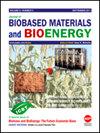Structural Characterization of Activated Carbon Prepared from Passion Fruit By-Product for Removal of Cholesterol and Toxic Compound in Liquid Food
IF 0.5
4区 医学
引用次数: 1
Abstract
This study aimed to determine the structural characteristics and adsorption capacities of a novel activated carbon prepared from passion fruit by-product. Passion fruit peel was carbonized and structurally modified using phosphoric acid-potassium hydroxide reagent before carbon activation. Industrial-activated carbon was used as a control sample. The surface functional groups and adsorption capacities of the activated carbon samples were determined. The results showed that the chemical-modified activated carbon had anhydride and carboxylic acid as the main functional groups on the carbon surface, together with several conformations of the hydroxyl group. These hydroxyl confirmations were in alkoxy and carboxylate forms but not phenoxy. The peel-based activated carbon had a smoother carbon surface with multiple micropores, whereas the carbon surface of industrial activated carbon was rough with multiple meso- and macropores. The methylene blue adsorption capacity (0.1 mg/mL methylene blue) of the peel-based activated carbon (99.97±0.01%) was comparable to the industrial activated carbon (100.00±0.01%). But the peel-based activated carbon had better cholesterol and albumin adsorption capacities than the industrial activated carbon. Since activated carbon prepared from the fruit peel has better adsorption capacities of cholesterol and other chemicals in liquid foods, it can replace the wood-based activated carbon in food and pharmaceutical applications.百香果副产物活性炭去除液态食品中胆固醇和有毒化合物的结构表征
研究了以百香果副产物为原料制备的新型活性炭的结构特性和吸附性能。在碳活化前,用磷酸-氢氧化钾试剂对百香果皮进行炭化和结构改性。以工业活性炭为对照样品。测定了活性炭样品的表面官能团和吸附能力。结果表明,化学改性活性炭表面以酸酐和羧酸为主要官能团,并伴有羟基的几种构象。这些羟基确认为烷氧基和羧酸盐形式,但不是苯氧基。果皮活性炭表面光滑,有多个微孔,而工业活性炭表面粗糙,有多个中孔和大孔。皮基活性炭对亚甲基蓝的吸附量(0.1 mg/mL)为99.97±0.01%,与工业活性炭的吸附量(100.00±0.01%)相当。但皮基活性炭对胆固醇和白蛋白的吸附能力优于工业活性炭。由于果皮制备的活性炭对液态食品中的胆固醇等化学物质有较好的吸附能力,在食品和医药领域可以取代木质活性炭。
本文章由计算机程序翻译,如有差异,请以英文原文为准。
求助全文
约1分钟内获得全文
求助全文

 求助内容:
求助内容: 应助结果提醒方式:
应助结果提醒方式:


